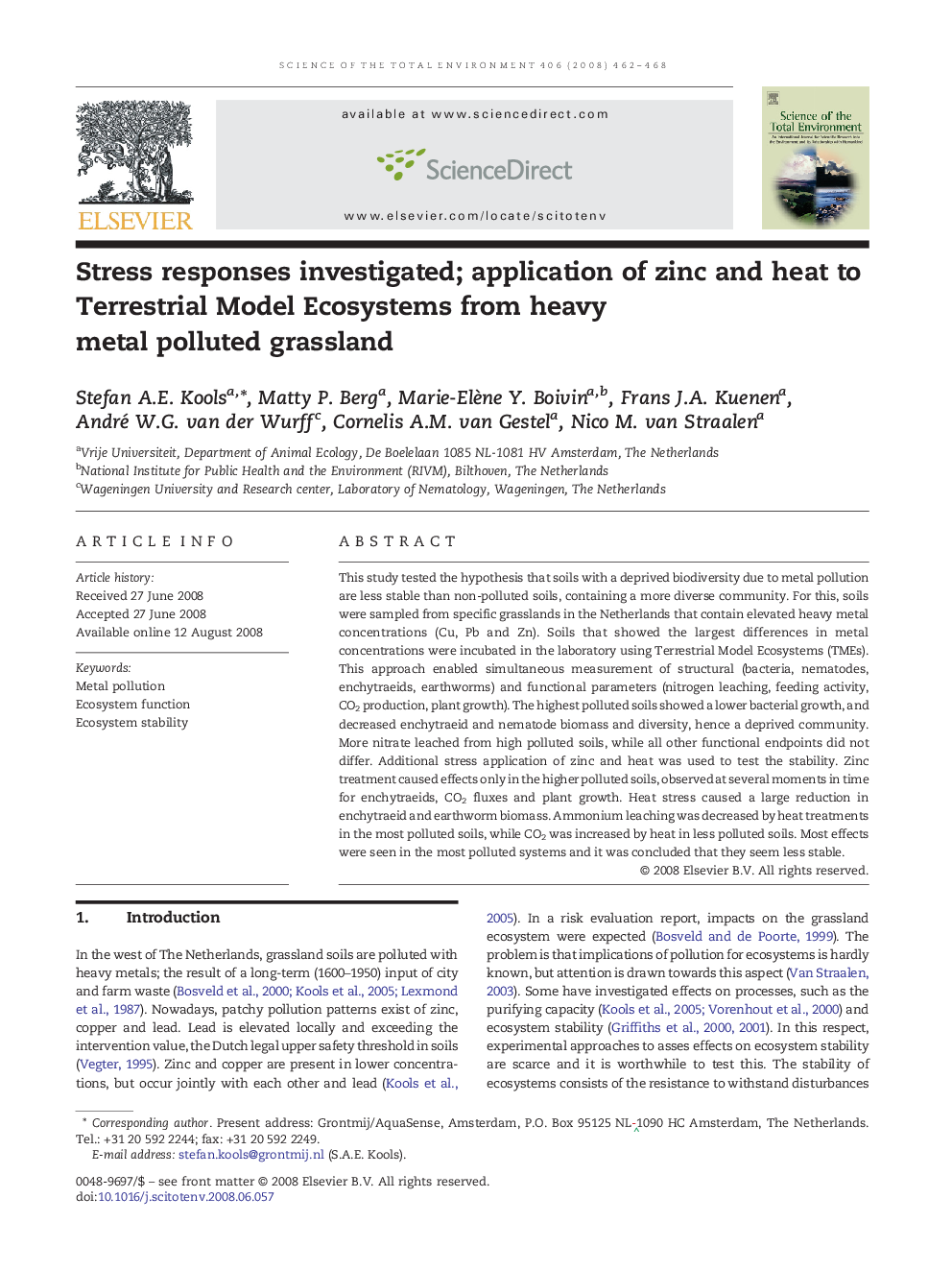| کد مقاله | کد نشریه | سال انتشار | مقاله انگلیسی | نسخه تمام متن |
|---|---|---|---|---|
| 4432244 | 1619910 | 2008 | 7 صفحه PDF | دانلود رایگان |

This study tested the hypothesis that soils with a deprived biodiversity due to metal pollution are less stable than non-polluted soils, containing a more diverse community. For this, soils were sampled from specific grasslands in the Netherlands that contain elevated heavy metal concentrations (Cu, Pb and Zn). Soils that showed the largest differences in metal concentrations were incubated in the laboratory using Terrestrial Model Ecosystems (TMEs). This approach enabled simultaneous measurement of structural (bacteria, nematodes, enchytraeids, earthworms) and functional parameters (nitrogen leaching, feeding activity, CO2 production, plant growth). The highest polluted soils showed a lower bacterial growth, and decreased enchytraeid and nematode biomass and diversity, hence a deprived community. More nitrate leached from high polluted soils, while all other functional endpoints did not differ. Additional stress application of zinc and heat was used to test the stability. Zinc treatment caused effects only in the higher polluted soils, observed at several moments in time for enchytraeids, CO2 fluxes and plant growth. Heat stress caused a large reduction in enchytraeid and earthworm biomass. Ammonium leaching was decreased by heat treatments in the most polluted soils, while CO2 was increased by heat in less polluted soils. Most effects were seen in the most polluted systems and it was concluded that they seem less stable.
Journal: Science of The Total Environment - Volume 406, Issue 3, 1 December 2008, Pages 462–468